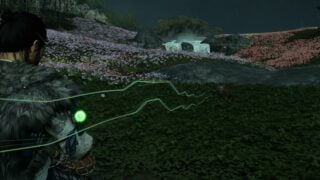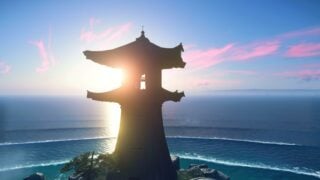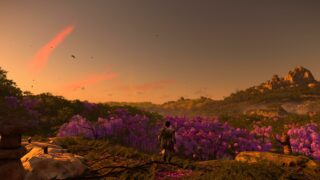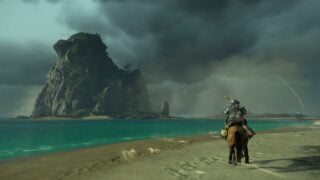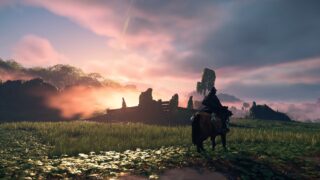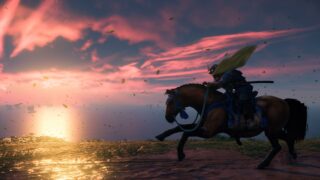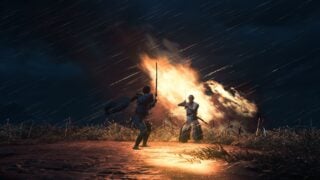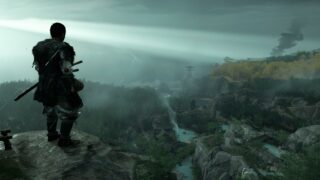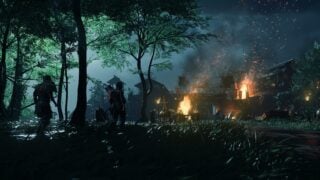Review: Ghost of Tsushima Director’s Cut stands toe-to-toe with the PS5’s best
The PS5 version delivers the definitive experience, while Iki Island adds new layers to Jin’s story – even if it’s a bit short
- Game director
- Nate Fox
- Key Credits
- Jason Connell (Art director), Shigeru Umebayashi (Composer)
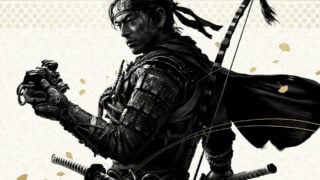
When it debuted in the final months of the PlayStation 4’s reign as Sony’s main console, Ghost of Tshushima felt, in many ways, like a tribute to the generation that was drawing to a close.
Having followed an almost unparalleled run of exclusive hits for the blue brand, Ghost of Tshushima’s incredible visuals, engrossing storytelling, and enjoyable combat were somewhat held back by an open-world formula that many have grown tired of.
[Note: This review contains a synopsis for the Iki Island expansion’s story, which those looking to play the game ‘blind’ may consider a spoiler.]
Now, almost a year and one month to the day of its original release, the Ghost of Tsushima Director’s Cut arrives on PlayStation 5, bringing with it new content in the form of Iki Island, and other features that take advantage of the leap in hardware, such as 3D audio, visuals targeting 4K at 60 frames-per-second, and DualSense integration.
Ghost of Tsushima is the story of Jin Sakai, a samurai who after a majority of his clan is wiped out my Mongolian invaders, must reform his dynasty and take back the island of Tshushima.
Returning to Tsushima for the first time since we originally played it on PS4 is a joyous experience. Few games manage such a starkly cinematic and impressive opening sequence as the initial invasion of the Mongol army led by Khotun Khan. With the visual might of the PS5 behind it, Ghost of Tshushima is so visually impressive that it’s a wonder it ever ran on a PlayStation 4. The colour palette, weather effects and how that weather influences the nature around the island are still unmatched.
For those who are planning to upgrade their PS4 copy to the Director’s Cut, there’s little new in the opening 10 hours of the game. The new content, Iki Island, is locked until you’ve reached the second area. However, you are able to import your PS4 save, and doing so will allow you to play the expansion straight away, so long as you’ve unlocked the second region.
If you’re planning on playing through the opening region again, you may find yourself struggling to notice much of a difference from the original, aside from the visual improvements. The pitter-patter of footsteps does come through the DualSense, but we only noticed it when we were specifically feeling for it, it doesn’t leave a lasting impression while you’re lost in combat.
The 3D audio is a great addition, and a great showpiece for the Pulse Headset. The excellent score has never sounded better, and I found myself able to execute stealth sequences based on listening for directional footsteps and voices alone, instead of relying on the immersion breaking superpower of being able to see through walls.
Another addition is that the Japanese audio track for the game is now fully lip synced. For those looking for a more authentic experience, this is a nice addition, although as something locked behind the PS5 upgrade, it feels less substantial than the gameplay improvements, especially when such a small fraction of the audience will use it.
“Iki Island does an excellent job at fleshing out a lot of Jin’s backstory that was missing from the original game. It feels like a necessary piece of storytelling who’s exclusion from the original makes the base game’s story weaker in retrospect.”
Once unlocked, Iki island begins as Jin encounters a group of Mongols, seemingly possessed by overwhelming rage. After defeating them, he learns that a mysterious shayman was controlling them, causing their increased ruthlessness. It transpires that this shayman is from Iki Island, a land in which Samurai are extremely unwelcome, and also the place in which Jin’s father met his untimely fate.
Jin travels to the island and discovers that it has been taken over by The Eagle, a towering brute of a warrior that seems to possess mystical powers. After an encounter with The Eagle leaves Jin weak, he begins to see visions of his dead father, manipulated by The Eagle and their followers.
Iki Island does an excellent job at fleshing out a lot of Jin’s backstory that was missing from the original game. It feels like a necessary piece of storytelling who’s exclusion from the original makes the base game’s story weaker in retrospect. Instead of hailing Jin’s father as a hero, and positioning Jin’s journey as a mission to walk in his shoes, the expansion repaints his father as a brutal coloniser, someone who destroyed homes and murdered families.

This adds great depth to Jin and forces him to reconsider everything about his father’s death that he has fixated on. To Jin, he and his father were settling the island and bringing it into their kingdom to prosper, to the people of Iki Island, it was The Sakai Invasion. It’s a surprisingly effective and complex reflection on colonialism, however, it feels like it needs more room to breathe.
The main story missions in Iki Island wrap up in around 6 hours, and while there is plenty of side content to engage with, such as an adorable new animal sanctuary minigame, I’d have loved more time exploring Jin and his father. This new angle on his story ends up overshadowing The Eagle, who ultimately serves as another big bad that you need to defeat.
The island itself is fairly large, around half the size of the game’s first region, but precious little of it is actually used in the main story. After you’ve concluded the tale, you’ll still have a lot left to explore, although much of it is busy work.
“Ghost of Tsushima Director’s Cut is the perfect excuse to go back to the island. The game has never looked better, and now stands toe-to-toe with the other Sony tentpoles on the platform.”
The island itself is a visual delight, with bright, luscious colours from shore to shore. The original game mastered the art of designing the environment to produce moments of dazzling sunsets, or sun-drenched battles, Iki Island takes that to new heights, to the point where some locations and battles were so colourful and otherworldly that they took on a mystical quality, fitting the theme of the enemy force. It’s visually distinct from Tsushima island, and a pleasure to ride around.
Ghost of Tsushima Director’s Cut is the perfect excuse to go back to the island. The game has never looked better, and now stands toe-to-toe with the other Sony tentpoles on the platform. While the gameplay changes aren’t enough to shake the nagging feelings or repetitiveness, engaging combat and a well told story are more than enough reasons to play through the game again.
Iki Island is a visual treat whose story adds layers to Jin’s character that feel so essential, it makes us wonder how they were ever cut from the original game. Completing every objective on the island will take some time, but if you’re only interested in the main story, your time on Iki may be briefer than expected.
- The incredible visuals have never looked better.
- Iki island enhances the narrative of the original game.
- Engaging combat that remains challenging.
- Japanese lip sync adds to the authenticity
- Repetitive open world design
- Iki island’s comparatively short runtime.





